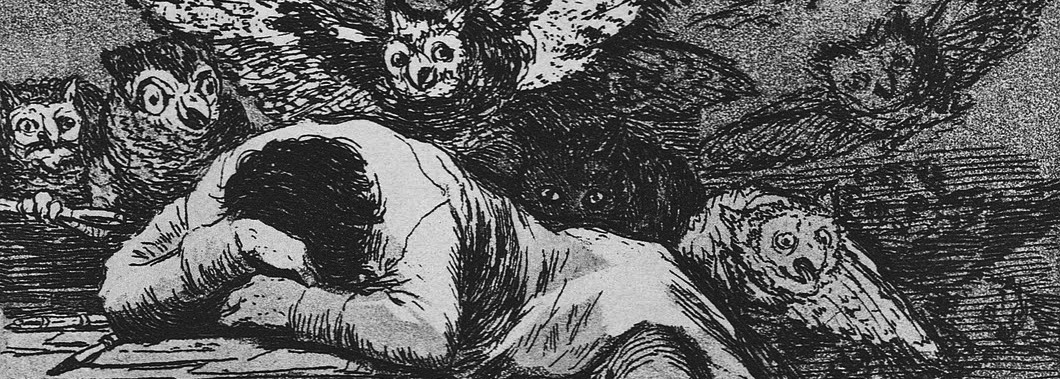 There’s no doubt that that Friedrich Nietzsche’s On the Genealogy of Morals is, as its subtitle announces, “a polemic” (13). Nietzsche rages against Western (so-called) civilization and the palpable sense of claustrophobia, defeat, sickness, and enervation in which we find ourselves: “Enough! Enough! I can’t take any more. Bad air! Bad air! This workshop where ideals are manufactured–it seems to me it stinks of so many lies” (47). Hence he rails also against the various forces that have led up to and keep us in this dire situation: slave morality and its inversion of values such that what was once good is now pronounced evil; ressentiment and its negation of all that is “different” that is “not itself” (36); the cult of guilt and “the oppressive narrowness and punctiliousness of custom” (85); the ascetic ideal and its priesthood that, by making us feel that our own sinfulness is to blame for our predicament, seeks “to exploit the bad instincts of all sufferers for the purpose of self-discipline, self-surveillance, and self-overcoming” (128).
There’s no doubt that that Friedrich Nietzsche’s On the Genealogy of Morals is, as its subtitle announces, “a polemic” (13). Nietzsche rages against Western (so-called) civilization and the palpable sense of claustrophobia, defeat, sickness, and enervation in which we find ourselves: “Enough! Enough! I can’t take any more. Bad air! Bad air! This workshop where ideals are manufactured–it seems to me it stinks of so many lies” (47). Hence he rails also against the various forces that have led up to and keep us in this dire situation: slave morality and its inversion of values such that what was once good is now pronounced evil; ressentiment and its negation of all that is “different” that is “not itself” (36); the cult of guilt and “the oppressive narrowness and punctiliousness of custom” (85); the ascetic ideal and its priesthood that, by making us feel that our own sinfulness is to blame for our predicament, seeks “to exploit the bad instincts of all sufferers for the purpose of self-discipline, self-surveillance, and self-overcoming” (128).
No wonder Nietzsche’s style is so impetuous and abrasive. To wake his somnolent readers and alert them to the damage they have been doing themselves for centuries, let alone to carve out a different path, requires “a kind of sublime wickedness, an ultimate, supremely self-confident mischievousness in knowledge that goes with great health” (96).
One can almost feel the ebb and flow of his emotions as Nietzsche writes: disbelief, anger, impatience, frustration, irritation, annoyance, exhaustion… and hope. Yes, hope, not only because his belief in mankind’s potential as great as his dismay at the ingeniousness with which we have perversely tortured and hobbled ourselves, but also because even the ruins themselves have something that can be salvaged.
First, there is the fact that even the immense disasters that afflict us (that we have inflicted on ourselves) have their own value. The sick body, too, has its own perspective and there is no perspective so misguided that it should be summarily eliminated. Or to put this another way: the sick body, too, knows something; we cannot deny the body even in its weakness and its suffering. And all knowledge should be welcome to those who really seek to know. The various “reversals of accustomed perspectives and valuations with which the spirit has, with apparent mischievousness”–note that word again–“and futility, raged against itself for so long” allow us “to see differently in this way for once, to want to see differently” (119). They add to the stock of human experience and discovery, and against the poisonous ideal of a “pure, will-less, painless, timeless knowing subject” we should welcome even this hobbled perspective in that “the more affects we allow to speak about one thing, the more eyes, different eyes, we can use to observe one thing, the more complete will be our ‘concept’ of this thing” (119). Even the sick and the weary, the defeated and the self-defeating, have their contribution to make.
(Note by the way that it is this impulse to see value in ruination, this accommodation of impurity and difference, that makes Nietzsche very far from the proto-fascist he is sometimes lazily assumed to be. Nietzsche is engaged in a war, that’s true, but in his view the noble spirit always learns even from his enemies. And ultimately Nietzsche’s goal is more variety, not less; more life and more different kinds of life rather than the death and destruction upon which the Third Reich became fixated.)
Second, the very stubbornness and ingenuity with which we have turned against our better natures is, Nietzsche believes, itself a sign of hope. He concludes the book by noting that mankind’s self-abasement, its “rebellion against the most fundamental presuppositions of life,” indicates our nihilism, our “will to nothingness.” But precisely the fact that we struggle so hard for our own oppression shows that at least we are still struggling: “it is and remains a will!” The final consolation that Nietzsche offers is that “man would rather will nothingness than not will” (163). There is life in the old brute yet, however much that life may be turned against itself. We may be weary, we may be suffering, but the very effort we invest in perpetuating our own degradation shows that we are not dead yet. Now if only we could put the same amount of affective energy into a battle for life, rather than against it. What a wonderful sight that would be!
